I recently got some Dick Smith Electronics A2667 bookshelf speakers cheapish ($20AUD) off Ebay. For a bit of fun I thought I’d see how much better I could make these low cost “made in china” (though not quite white van) speakers sound.
Dick Smith Electronics is an Australian retail electronics chain who used to have a more hobbyist/kit orientation, but now more known for selling laptops, TVs, home theatre rigs etc. They have a bunch of lower cost “home brand” gear, some of it quite, well, cheap, but occasionally of quite reasonable quality.
The A2667 speakers were sold 6 or 7 years ago and I had read on various forums that for $70 bookshelf speakers they competed well with speakers under $300, and could be made even better by upgrading the crossover.
They are small 2 way bass reflex speakers with a 5″ woofer tweeter is 1″ fabric dome. Rated at 100W with 86dB efficiency.
Unmodified they sounded quite good (for the size and price) but a bit muted in the high end, and a slight graininess to the sound. But for their size and price they have quite a big and pleasant sound.
Running up ARTA and doing a frequency response I saw a huge notch in the frequency response at 8Khz, presumably the crossover point. The crossover turned out to be a simple first order crossover with a 2.2uF elecrolytic capacitor with a 0.6mH iron core inductor, as well as an lpad for the tweeter.
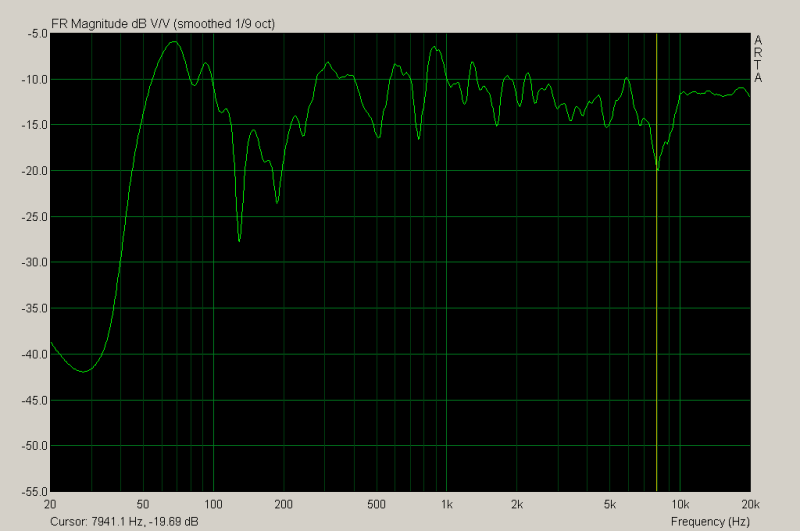
I was measuring this in a small room with a lot of stuff around so the low end measurements would be all over the place from reflections..
Hoping the notch was from lazy crossover design rather than driver limitations I plugged in a few numbers into some online crossover calculators and decided replacing the 2.2uF electrolytic with 4.4uF (two 2.2uF MKT capacitors in parallel) would close the hole, with parts I had on hand.
Measuring again and the 8khz notch had been greatly reduced confirmed by listening and hearing a lot more detail in the high end.
Next i replaced the inductors with 0.56mH aircore inductors of a higher gauge of wire. I hadn’t measured any THD and this didnt make a measurable effect on the frequency response, but the sound really opened up with more clarity and detail, and the previous slight graininess was gone.
I could probably get even better results with some simulation of the cabinet and drivers etc, though it might get into diminishing returns territory.
The net result of this is these cheap speakers now sound great, detailed and pleasant to listen to with a lot of high end detail. I’m impressed how much some relatively simple component upgrades helped on these speakers.
old capacitor and new capacitors:
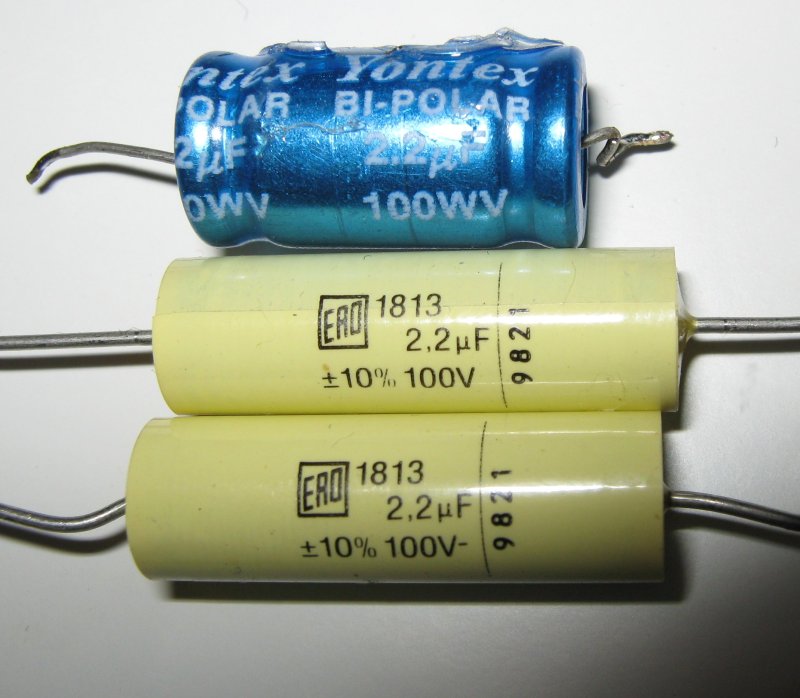
old inductor and new inductor:
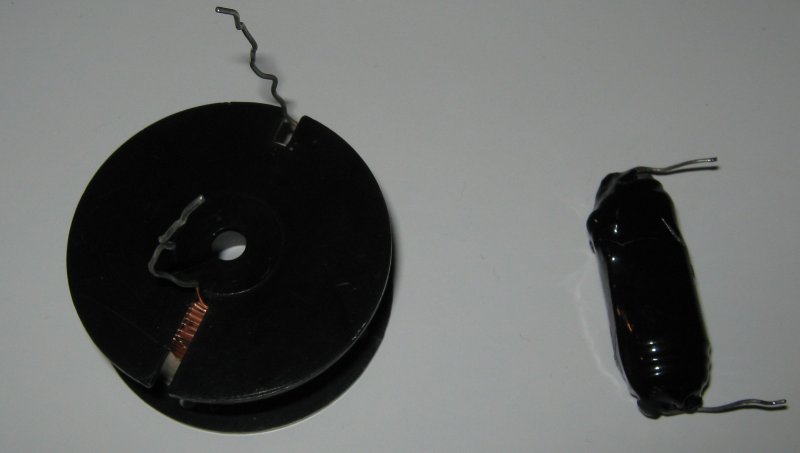
rear of the speaker:
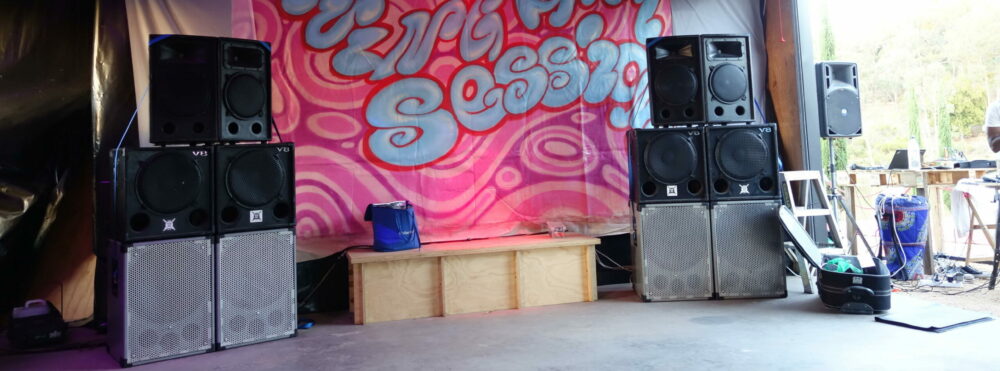
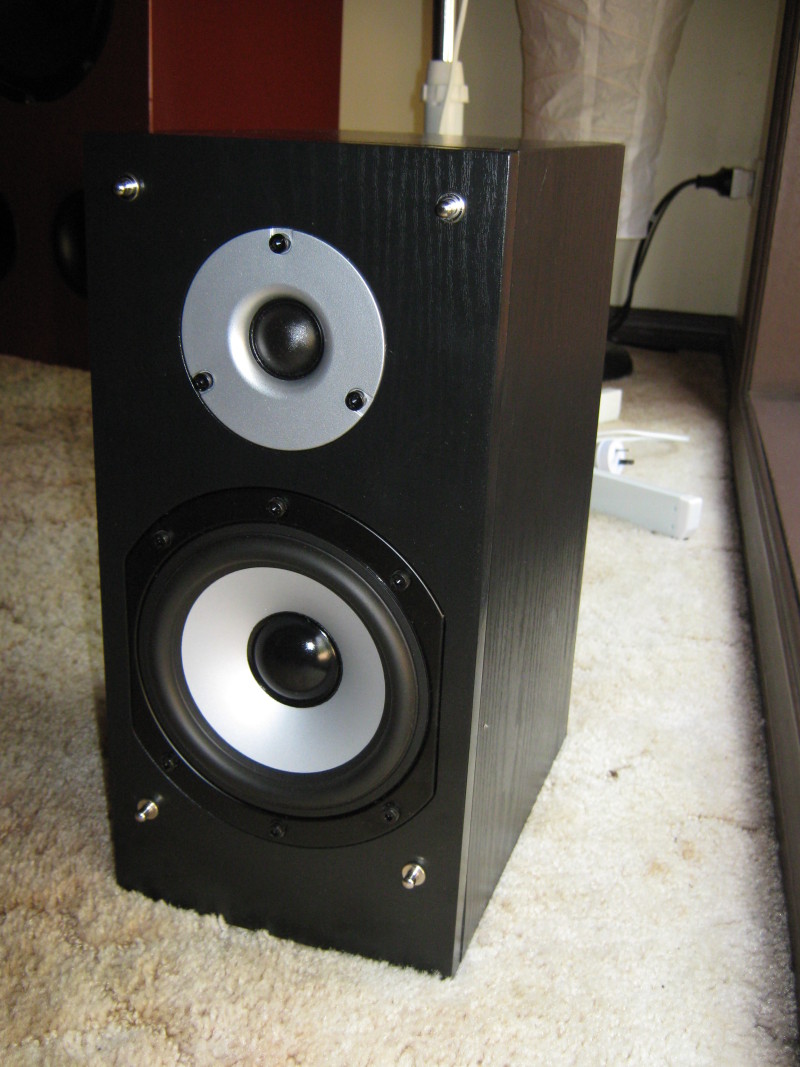
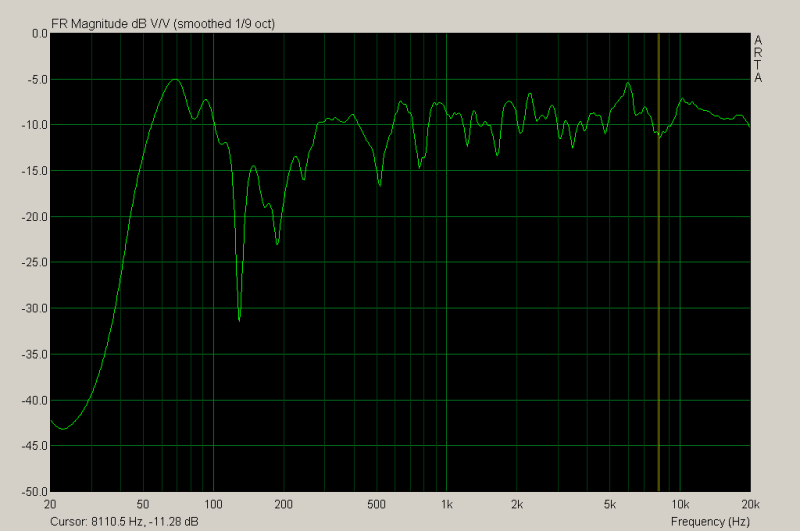
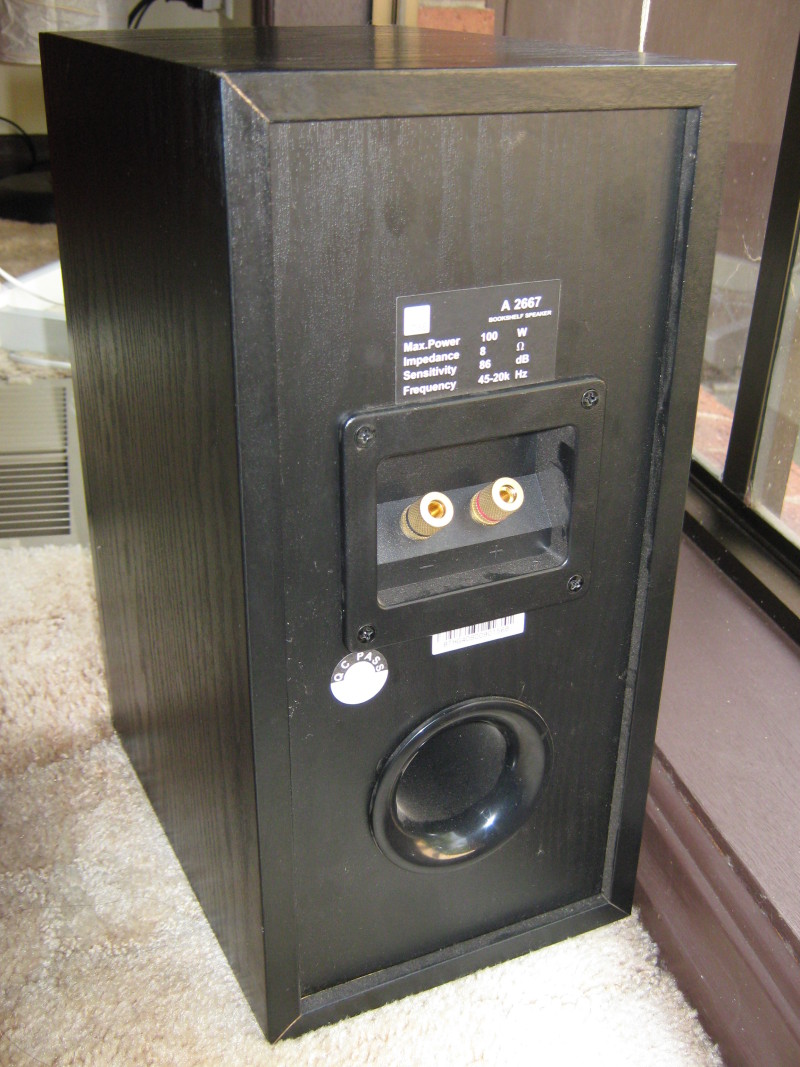
Awesome work!
I’ve got quite a few sets of A2667s (Used in a 7.1 system). Great value. i replaced the caps with some polypropylenes from jaycar yearss ago and that helped with clarity from the tweeter, but there’s still a very grainy/lack of clarity and detail in the woofer. Didn’t think it was that affordable to replace the inductor so I never bothered, I will have to try this out!
Thanks!
Interesting though they’ve used a 0.6 with a 2.2uF.. and you’ve bumped it to 4.4.. i guess whatever works 🙂
Hey Col – by a funny coincidence, I found a pair of these same speakers on our local council cleanup. currently doing duty as monitors on my desk at home. be interesting to compare them side by side to your modded ones.
I built a linkwitzlab Pluto clone using the woofers !
http://gainphile.blogspot.com/2008/05/linkwitz-pluto-sewer-pipe-omni-p.html
Hi there,
Great post. Just wondering though, which numbers did you use for the online crossover calculators?
Not sure if I am doing this the right way, but for 8 ohm speakers, with a crossover at 8KHz, the results I get are 2.48 uF for the capacitor, and 0.16 mH for the inductor.
I must be using the wrong values?
Thanks,
Pete
Hi,
The reason for the gap I suspect is them using different crossover points for the high freq. and low freq. Using a nominal impedance of 7 ohm for each driver the 2.2uF value gives a HP crossover point of
10300Hz. And the 0.60mH gives a LP crossover point of 1900hz.
This possibly explains the general comments about this speaker of excellent for the price but muted in the high end.. the crossover point is not as great as it could be, possibly to save the expense of a larger capacitor.
At least dropping the nominal HP crossover point to 5100 Hz with 4.4uF has “closed the gap” a bit, maybe with some individual driver measurement better values could be chosen, possibly even 2nd order crossover but that would blow the parts cost out to be many times more than the speaker cost.
As I have the measurement gear and some of these speakers spare maybe I will recheck one day.
i built a set of focal 5ws utopia spleakers into these cabinets with a pair of upgraded silk dome tweeters on a woodstained replacement baffle. dynamat lined inside the cabinets and mounted on a pair of vogels stands filled with lead sinkers.
as you can imagine they sound sublime!
great project guys.
Hi Zog,
Pete here again.
I followed your steps and replaced the components. Great improvement. Thanks heaps for the info.
Wouldn’t mind finding another pair of these as I need speakers for another room!!!
Cheers,
Pete
アメカジ レディース 楽天 ナイトウェア http://www.anxiety-yukata.com/
Just got to do your mods incl the 2013 upgrade of the 12db filter for woofer and phase inversion of tweeter .. wow wee very good. Funnily my sons have been fans of these speakers ( 3 sets ) for some time and they are all musicians and one an audio engineer….so probably it was the low end that always fascinated us .. now the high end is just as noteworthy .. my poor old morels with their solen caps and inductors etc are looking very lonely/ forlorn. I run these off a Yamaha ca-800 amp from the 1970’s with some sort of class A mode, and the sound is very enjoyable.
As usual the grills do remove some atmospherics, but if your sound is a little bright leave them on. We done, good fun
Wow! It’s great to know this info I put up about the DSEA2667 speakers is getting put to good use!
Thanks for letting me know!
Did the mods to mine and love em, went a bit wild with the 15AWG Aircoil but it works so I’m leaving it. Do you happen to have any Driver or Tweet raw measurements, keen to do all the sums myself and change a few more parts if I can. This is my first attempt at modding speakers and I’m hooked 😉
Hi,
I have the raw driver info (impedance, T/S params and frequency response) here:
http://pix.minirig.org.au/main.php?g2_itemId=4791&g2_page=3
in some of the non-image downloads.
Sweet mate thanks, thinking about changing a whole bunch of new parts. Like running a .25mH coil for the tweet, and putting some filters on the woofer crossover like a 8.2ohm resistor and a 8.2uF cap, maybe changing the coil to a .27mH. What do you think